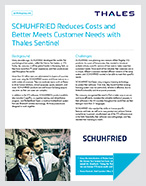What is Intellectual Property Theft and why is protecting your IP so important?

With the online space becoming more crowded, cloud computing becoming the mainstream, and just about everything located on the internet, stealing intellectual property has become easier than ever before.
Intellectual property can be movies, music, content on the web, software and more. You can think of IP as creations and not necessarily physical products. But, this doesn’t mean that the damage is less than other types of theft. IP theft damage is estimated at hundreds of billions of dollars a year according to the Commission of the Theft of American Intellectual Property.
What does IP threat mean and how can you protect yourself? This piece will look at intellectual property theft and how to manage your IP to stay safe.
What is Intellectual Property Theft?
 Intellectual property theft is one someone steals an idea, creative expression, or invention from an individual or a company. IP theft can refer to someone stealing patents, copyrights, trademarks, or trade secrets. This includes names, logos, symbols, inventions, client lists, and more. Intellectual property theft cases are exceptionally common and require smart intellectual property management software in order to be avoided.
Intellectual property theft is one someone steals an idea, creative expression, or invention from an individual or a company. IP theft can refer to someone stealing patents, copyrights, trademarks, or trade secrets. This includes names, logos, symbols, inventions, client lists, and more. Intellectual property theft cases are exceptionally common and require smart intellectual property management software in order to be avoided.
Is intellectual property theft a crime?
Yes! Most intellectual property theft cases are considered federal cases (therefore federal crimes). Companies or individuals that can identify who stole their IP can bring them to court and in some cases, serious penalties can be given to the criminals. These include fines, imprisonment, civil charges, suspension of licenses, etc.
The history of intellectual property theft
IP theft is not a new phenomenon. The idea of intellectual property dates back to the 1700s (British Statute of Anne-1710) when the idea of patents and copyrights were coming into place and the term intellectual property was born. Over time, the concept of IP theft has changed drastically, especially with the introduction of new technologies. From manufacturing processes and ideas in the industrial revolution to cybersecurity attacks and threats in the 21st century, IP theft has changed its face multiple times over the years.

What are the four types of intellectual property?
When discussing intellectual property and IP theft, we usually break IP down into four different categories.
- Copyrighted material – Things that are copyrighted are usually creative expressions and may include poems, books, paintings, and software. Individuals, as well as businesses, may copyright their work in order to protect it from being used by others without explicit permission.
- Patented material – Patents are given to inventors in order to protect their inventions. In most cases, patents are valid for 20 years from filing with the US Government. Business owners and individuals seek patents so that others are unable to take their ideas and claim them for themselves. In some cases this can be a bit tricky as people can reverse engineer inventions and tweak them, therefore avoiding intellectual property theft.
- Trademarks – Trademarks are “words, phrases, symbols, or designs, or a combination thereof, that identifies and distinguishes the source of the goods of one party from those of the others” according to the USPTO. For example, trademarks often relate to images, colors, logos, mottos or slogans, etc.
- Trade secrets – Trade secrets are confidential pieces of information that give a business a competitive advantage. For example, a recipe for a specific type of food or drink or even a work method, distribution system, strategies, etc. This is why companies make people sign non-disclosure agreements and list trade secrets in contracts in advance to confirm that their information is considered secret and therefore, protected.
What should you do if you’ve been the victim of intellectual property theft?
If someone has stolen your intellectual property, there are several steps you can take to remedy the situation.
In most cases, the first thing to do is to ask the person or company that has stolen from you to stop using your IP. After all, IP theft is a crime so the person may agree to stop using the IP immediately. In some cases, IP theft is non-intentional (for example if a license expired).
In more complicated intellectual property theft cases, you may have to take legal action. Usually, this begins by having an attorney send a letter about the alleged crimes. In many cases, the issue stops here. If it doesn’t you may have to move on to an actual lawsuit.
Intellectual property theft best practices for prevention
Protecting your IP in advance is one of the best ways to make sure that you won’t fall victim to theft. Here are a few of the best ways to prevent IP theft:
- Figure out what your IP is: This may sound simple, but first you need to figure out what exactly you need to be protecting (and from whom!). By doing this, companies need to also make sure that all employees (and anyone who comes into contact with the IP), understand what the company’s intellectual property is in order to prevent intellectual property theft. It is also important that employees and others understand why it is so critical to protect this valuable IP.
- Figure out where your IP is: After you’ve identified the IP that needs to be protected, now’s the time to locate it and implement policies and procedures to make sure your IP is protected. This includes cloud applications, employees’ personal devices, third-party systems, etc.
- Review who has access to IP: Without even realizing it, members of an organization (or external vendors), may have access to IP and therefore put it at risk. By implementing reviews of IP and sensitive data access, the risk that IP will be leaked is lowered substantially. The same is true for employees that leave the company or those who change roles and/or departments. Make sure that they only have access to relevant data to make sure that there is no insider threat risk.
- Keep an eye on employee activity: Just like making sure that IP is only accessible by the right people, organizations should make sure to monitor employee activity within the network. This is to make sure that no suspicious activity is going on together with the fact that employees are less likely to visit suspicious sites and activities when they know that they are being monitored.
- Make sure that your cybersecurity is up to par: Cybersecurity is a hot topic, and the market is constantly changing. Organizations should consistently check for gaps in their security protocols to make sure that attackers stay away. By conducting assessments on a regular basis, intellectual property as well as other important assets, can be protected.
- Use intellectual property management software – Technology helps keep IP safe today with management software to help you track your IP and make sure it always stays in the right hands. IP management software not only helps organizations understand what their IP is and where it’s located, it keeps it protected on a regular basis.
Common hacking scenarios
- IP theft can happen in a wide variety of ways. While some are more vicious and purposeful than others, all can lead to devastating consequences. Companies and organizations of all sizes are at threat of IP theft, from large global enterprises to small and medium-size businesses. Understanding the most common hacking scenarios can help companies remain vigilant and protected.
- Human error- At the end of the day, the people who work at companies can make mistakes. In many cases, this type of IP theft is unintentional Perhaps an employee lost a company device or sent an email by mistake full of secret information and intellectual property. This is one of the reasons that employee education is so critical. If employees understand the potential damage of IP theft, they may make greater efforts to protect the intellectual property and trade secrets of the company. It is also important for employees to inform of any issues that they know of before too much damage is done.
- Hackers – This is the most well-known technique for intellectual property theft and the one that companies tend to put the most effort into protecting against. Using various techniques, hackers are known to make their way into company networks, giving them the opportunity for trade secret theft, IP theft as well as other business and confidential information on company servers. Hackers use a wide range of techniques to enter servers and steal information, once again highlighting the importance of employee education to avoid such scenarios.
- Inside jobs – At the end of the day, companies must rely on their employees to keep IP and sensitive information within the company and to not share with outside sources that may cause harm. Unfortunately, IP theft from within can’t always be stopped, as angry former employees may try to steal secrets and share them with competitors or others.
 In today’s post-COVID world, cybersecurity threats and attacks are rising rapidly. This is the time that companies need to make sure that their IP is protected against third parties and those looking to hold IP ransom for hefty fees. 2022 has been called by some the year of cybersecurity. As workers move to work-from-home models, VPN vulnerabilities are being exploited and companies cannot keep up with the security breaches that they are encountering. With that, ransomware attacks are continuing to increase, with enterprises paying out large sums just to get back to work as normal.
In today’s post-COVID world, cybersecurity threats and attacks are rising rapidly. This is the time that companies need to make sure that their IP is protected against third parties and those looking to hold IP ransom for hefty fees. 2022 has been called by some the year of cybersecurity. As workers move to work-from-home models, VPN vulnerabilities are being exploited and companies cannot keep up with the security breaches that they are encountering. With that, ransomware attacks are continuing to increase, with enterprises paying out large sums just to get back to work as normal.
As the problem becomes clearer and larger-scale, organizations in 2022 are looking to clean up their security practices (especially in the light of COVID-19 changes) to keep their IP and trade secrets safe from attack.
Opportunities and benefits of effective intellectual property management
Using intellectual property management software helps companies keep track of their IP (specifically software, licenses, etc.).
Let’s look at an example:
A software company provides licenses to a customer based on the client’s business needs. With a large number of licenses provided to the company, it can be difficult to keep track of what has expired and what hasn’t.
If a license expires and isn’t renewed, revenue opportunities are lost for the software company. In essence, the client is stealing the intellectual property (software) and committing a crime (intentionally or not). This situation can be prevented easily with intellectual property management software.
Other benefits include improving operational efficiency by minimizing business risk and ensuring business continuity, increasing customer satisfaction, and the ability to gain business insights including identifying revenue loss quickly.
Thales: Your key to keeping your IP safe and organized
 No one wants to find themselves in a situation of intellectual property theft. With Thales’ software monetization products and solutions, your software will be safe and organized at all times.
No one wants to find themselves in a situation of intellectual property theft. With Thales’ software monetization products and solutions, your software will be safe and organized at all times.
Our software licensing products use innovative software security and licensing enforcement to keep your revenue high and your operating costs low. With Thales, you won’t have to worry about IP theft and the damaging consequences of your software secrets being stolen.
Protect your intellectual property today, before its too late ! Get Sentinel EMS and RMS to put an end to intellectual property theft!

Create Recurring Revenue with Software Licensing - White Paper
Higher Revenue, Happier Customers Part 1: Creating a Software Licensing Win-Win with Recurring Revenue: We live in a customer-centric, software and services-focused world. Customers are now driving decision making, and they increasingly expect immediate access and value...

Monetize Your Intellectual Property for Protection- SCHUHFRIED Case Study
SCHUHFRIED Reduces Costs and Better Meets Customer Needs with Thales Sentinel - Case Study Many decades ago, SCHUHFRIED developed the world's first psychological test system called the Vienna Test System, or VTS. Today, the company is still the global leader in the testing...



